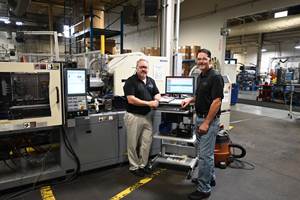Clearing the Red Tape for Driverless Cars Cuts Both Ways
New technologies and smart legislation could initiate a new round of purchases.
It should be no surprise to anyone that the vast majority of existing U.S. Federal motor-vehicle safety rules have been written with the assumption that a qualified human is behind the wheel. For this reason, autonomous vehicles have moved into a legal gray area. As the technology progresses and testing is conducted on active roadways, issues of safety and liability must be addressed quickly. In response, some states are crafting their own legislation; however, the end result will be a hodge-podge of state-by-state regulations that restrict and regulate the safety and performance of autonomous vehicles, where unified federal regulation would be preferable for the industry.
To prevent a disadvantageous state-by-state regulatory outcome, the House Energy and Commerce Committee is expected to unveil legislation to smooth the way for the inclusion of autonomous vehicles on public roads. Simultaneously, the Senate Commerce Committee is also crafting legislation to help smooth the regulatory road for the expanded use of autonomous cars with the help of Sen. Gary Peters (D-Mich.).
The introduction of reasonable legislation allowing for the safe incorporation of autonomous vehicles onto public roads cannot come soon enough. Automotive industry data shows a disconnect between new orders and the value of shipments. The 2017 ratio of the value of new orders to shipments (at 6.6 x) is 33% higher than the average ratio since 1992 of 4.9 x. These results suggest that manufacturers are significantly hedging their output despite strong new-order demand.
Manufacturers have several reasons for limiting their output. In general, the sedan and small-car markets have lacked profitability for the big OEMs, especially as incentives hit all-time highs in 2017. According to J.D. Power, incentives in 2017 are expected to exceed $4000, approximately a 15% increase over 2016 incentive levels.
Moreover, automotive credit data shows several concerning signs. According to the latest Federal Reserve data, the average maturity of new car loans is more than 67 months, in part due to the growing popularity and availability of 72- and 84-month term auto loans in recent years. Such long-term loans mean that the vehicle loses value faster than the amount of the loan outstanding, resulting in the owner having negative equity in the vehicle.
If the Fed begins raising interest rates to combat inflation and normalize the economy, interest rates will certainly increase. Fed data measuring the average finance rate of new-car loans shows that interest rates in a normal interest-rate environment could easily reach 7% or more, significantly more than that the 5.1% rate recorded in the first quarter of 2017. Even with exceptionally low interest rates, financing flows for motor-vehicle loans have been falling since 2015, and in 2017 those flows turned negative.
The question becomes: Have consumers exhausted their appetite for new cars, or is this simply a pause before a new wave of purchasing occurs? Regardless, there is much that can be done to advance the industry through new technologies and smart legislation.
ABOUT THE AUTHOR: Michael Guckes is the chief economist for Gardner Business Intelligence, a division of Gardner Business Media (Cincinnati, OH US). He has performed economic analysis, modeling and forecasting work for nearly 20 years among a wide rangeof industries. Michael received his BA in political science and economics from Kenyon College and his MBA from Ohio State University. Contact (513) 527-8800; mguckes@gardnerweb.com; gardnerweb.com.
Related Content
Atop the Plastics Pyramid
Allegheny Performance Plastics specializes in molding parts from high-temperature resins for demanding applications as part of its mission to take on jobs ‘no one else does.’
Read MoreAutomotive Awards Highlight ‘Firsts,’ Emerging Technologies
Annual SPE event recognizes sustainability as a major theme.
Read MoreNeste, Borealis and Covestro Plan to Make Polycarbonate From Recycled Tires
Companies announced agreement that will use advanced recycling to convert old tires into new PC-suitable for automotive applications.
Read MoreAutomotive Awards Highlight Emerging Technologies
Annual SPE Automotive event gives nods to several ‘firsts’ as well as sustainability.
Read MoreRead Next
See Recyclers Close the Loop on Trade Show Production Scrap at NPE2024
A collaboration between show organizer PLASTICS, recycler CPR and size reduction experts WEIMA and Conair recovered and recycled all production scrap at NPE2024.
Read MorePeople 4.0 – How to Get Buy-In from Your Staff for Industry 4.0 Systems
Implementing a production monitoring system as the foundation of a ‘smart factory’ is about integrating people with new technology as much as it is about integrating machines and computers. Here are tips from a company that has gone through the process.
Read More
.jpg;width=70;height=70;mode=crop)




















